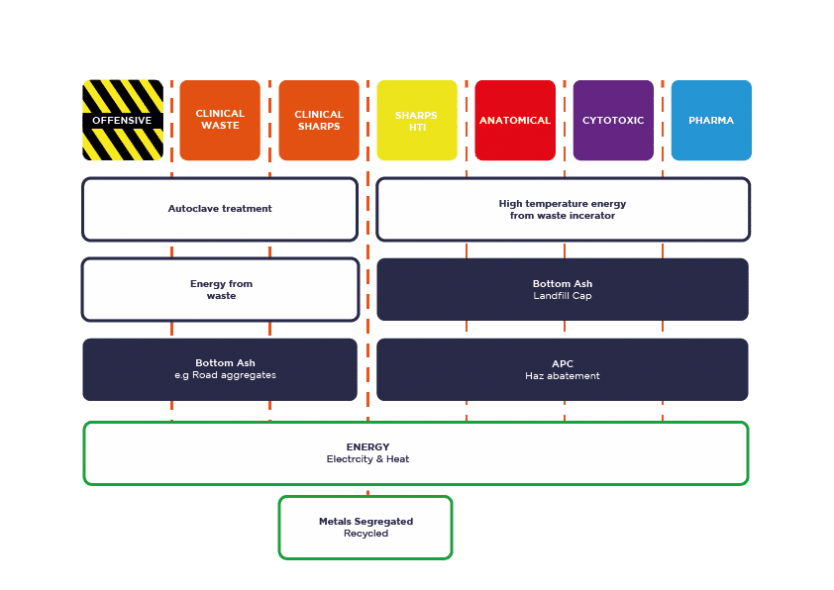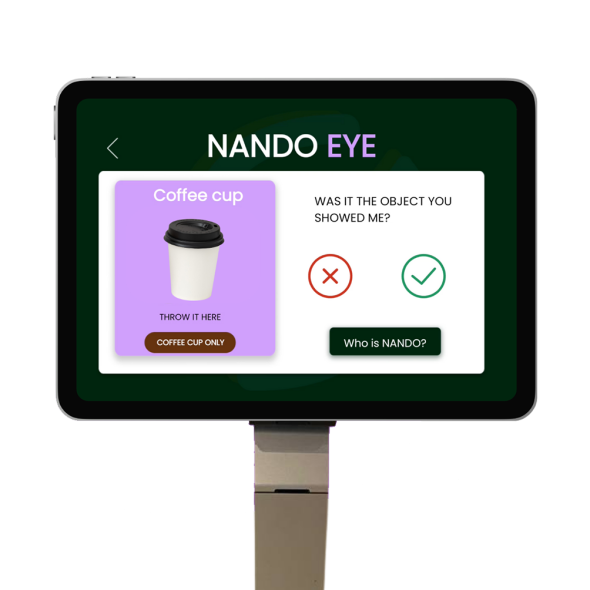Contact us today for your Free Quote
The healthcare sector depends on untold amounts of medical supplies, which inevitably leads to a great deal of waste. For every injection administered across the globe per year, for instance, a needle must be disposed of, as we do not yet have an effective way to decontaminate and then reuse them. During the COVID-19 pandemic, the WHO found that the “tonnes of healthcare waste exposed the urgent need to improve waste management”. This fact goes to show just how great the conflict is between the provision of a vital health service, and the prevention of avoidable damage to people and the environment through waste.
Needles are just the tip of the iceberg, however. In the context of the pandemic alone, most PPE equipment is only single-use — but it is not a unique example. Since the 1990 Environmental Protection Act, the UK has had designated waste streams (“the life cycle of waste from its source up until and including its eventual disposal”) for medical materials, devised to make sure the specific subtypes of objects are properly separated from each other. As such, this article will explain why segregation is necessary, and how to dispose of important items in the right way.
What are the rules for medical waste disposal?
The Healthcare Technical Memorandum requires all relevant medical staff to segregate waste streams. As a result, there are designated sub-categories for all items that are thrown away. Most medical waste (85%) is produced by non-hazardous activity, but the remaining 15% is considered hazardous, referring to those that are infectious, radioactive or toxic.
It is the responsibility of practitioners, professionals and relevant staff to be fully aware of the health hazard risks associated with improper disposals and avoid this at all costs. The main things to take into account are: how to safely manage waste and comply with legislation, understanding the types mentioned above, and how it should be stored, transported and disposed of.
In complying with health and safety legislation, it’s critical to consider the correct, safe storage and disposal of waste by type. The Department of Health and Social Care (DHSC) therefore provides several discrete, colour-coded streams: red, orange, yellow, purple, blue, and black and yellow stripes. This is maintained largely through the use of bags and containers of a particular colour, indicating the destination for specific types. While the DHSC indicates which colour belongs to a particular stream, this is not always uniform, however, and may depend on the specific facility. That said, NHS Trusts will largely follow the DHSC’s guidelines.
What are the types of medical waste?
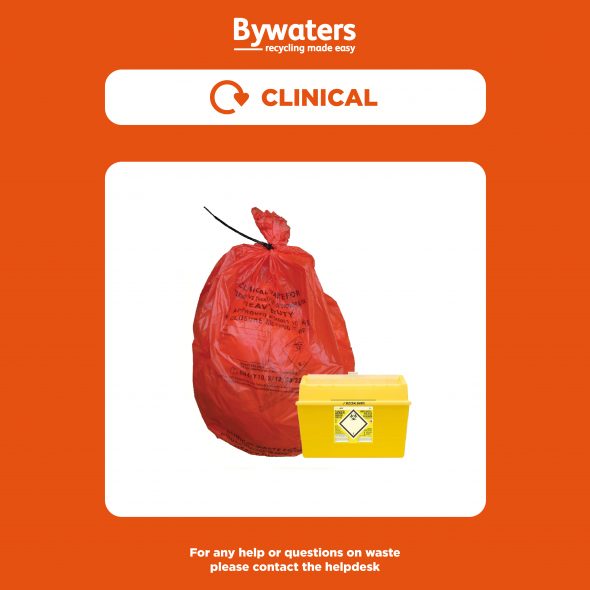 |
Clinical
Clinical waste is that which carries the possibility of contaminating or infecting someone, usually because of the material’s health hazards. This can mean items that have come into contact with bodily fluids, such as syringes, needles or other objects classified as sharps (such as pipettes, scalpels or lancets). It can also refer to materials exposed to other potential bodily contaminants, such as bandages or PPE. These items fall under the ‘hazardous’ category.
While some waste streams can be suitable for disposing of both chemicals and pharmaceuticals, this does not apply to all. When throwing out a clinically contaminated swab or face mask, it is essential to ensure the stream in question accepts them. These items come under the orange colour code, denoting that they should receive alternative treatment or be incinerated.
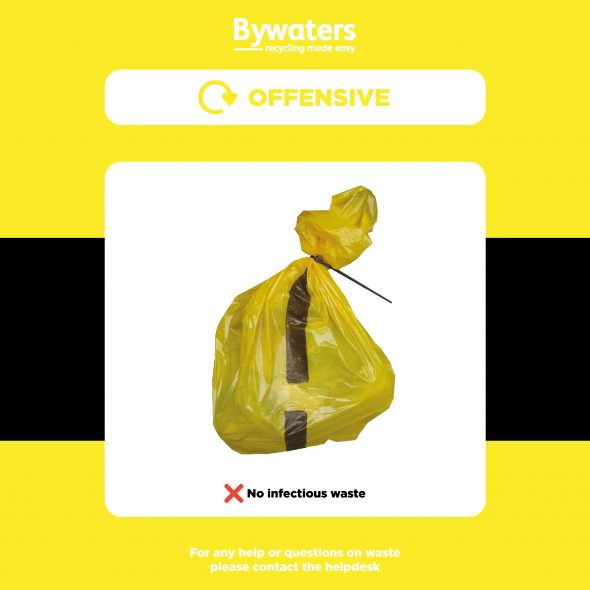 |
Offensive
The DHSC designates the title “offensive” as “non-clinical waste that is non-infectious and does not contain pharmaceutical or chemical substances, but may be unpleasant to anyone who comes into contact with it”. This can therefore include the same type of material as clinical waste (such as outer dressings, swabs and bandages) that are not contaminated. Other examples include sterilised medical supplies, which won’t infect people but will be an unpleasant discovery. The colour code for offensive waste is black and yellow stripes detailed in the DHSC guide.
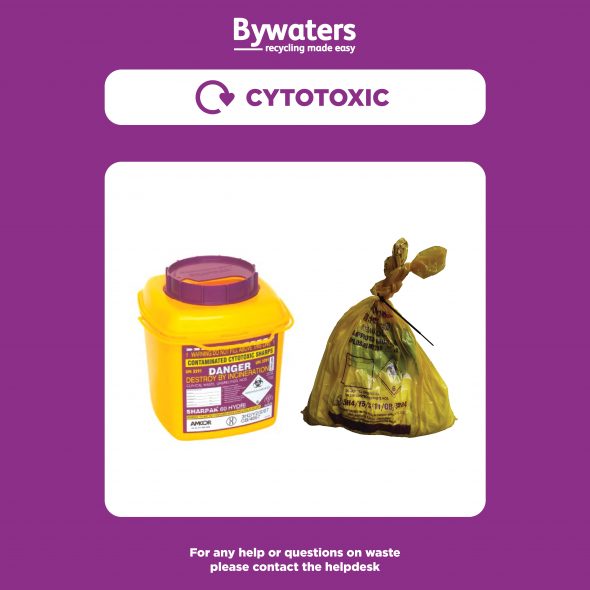 |
Cytotoxic
This category refers to any cytotoxic or cytostatic drugs, or any materials which have been in contact with them. Cytotoxic medicines are ones used in cancer treatment and other illnesses, most commonly produced by hospitals and medical facilities. Cytotoxic waste is considered hazardous as it may contain both carcinogenic (potential to cause cancer) and mutagenic (potential to cause genetic mutations) substances.
If employees do not properly dispose of any containers or items which have the residue of cytotoxic or cytostatic substances, they may go on to affect anyone that is exposed to them. The potential symptoms experienced by those who come into contact with them include nausea and vomiting, liver damage, abdominal pain, and the loss or malformations in unborn foetuses of pregnant women. Cytotoxic substances are disposed of under the purple colour code label.
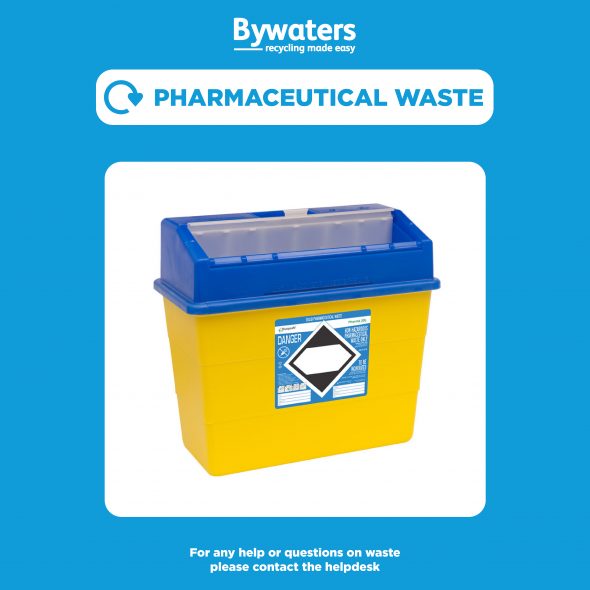 |
Pharmaceutical
Pharmaceutical waste means all types of medicine, creams and pills that aren’t cytotoxic or cytostatic. These will be the discontinued, expired, contaminated or unused medication that can potentially infect or harm people, animals or the environment. As such, they will be classified as hazardous. This stream is probably the most complicated, as each state has distinct classifications and disposal requirements even though they are grouped under the colour code of blue.
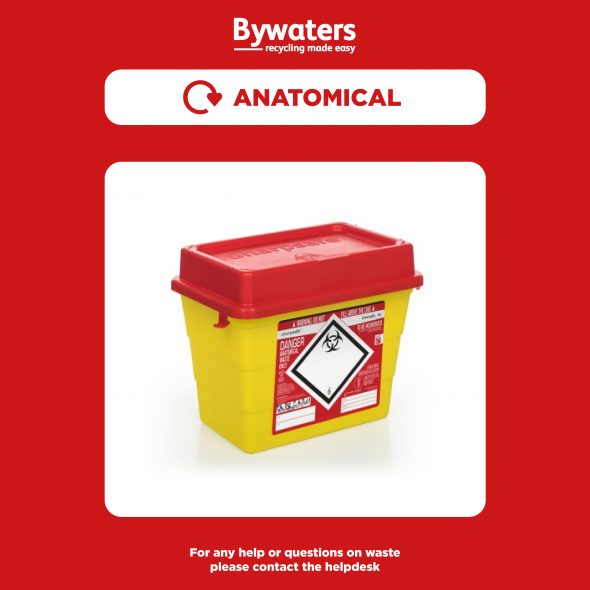 |
Anatomical
Items that have been in contact with human and animal tissue are specified as ‘anatomical’. In the healthcare sector, this can mean body parts, organs, and blood bags or preserves. These types are considered to be among the most hazardous, as they are all potentially infectious.
Anatomical waste falls under the red colour code, meaning they need to be kept separate from other waste at all times, and then incinerated. According to updated government regulations, the anatomical group requires an individual coding system beyond a specific bag colour: for example, chemically preserved body parts have a distinct code (18 01 06).
Does Bywaters deal with medical waste?
At Bywaters, we are committed to providing safe, secure and sustainable waste management for healthcare disposal, and equipped to expertly manage all four main types of medical waste. This includes clinical waste, which is properly disposed of to prevent any risk of contamination. We are fully compliant with all relevant legislation while delivering cost-effective, sustainable solutions.
Working alongside the UK’s most trusted waste providers allows us to send as much as possible for recycling or energy recovery. Once transported back to our facilities, your healthcare waste is destroyed through high-temperature incineration, and the resulting energy is used to power homes in London.
